Filipino cuisine and delicacies are varied and can also cause you some shock and uncertainty. Filipino food is very diverse and has been influenced by many different cultures and is quite unique. Let’s take a look now at some of the more famous Filipino cuisine and delicacies.
Filipino Cuisine And Delicacies
Let me start off by asking you if you have ever eaten at a Filipino restaurant outside of the Philippines? I bet you have eaten at a Chinese restaurant outside of China, or an Italian restaurant outside of Italy, or an Indian restaurant outside of India, right? The Philippines isn’t really known around the world as having great cuisine, particularly compared to some of its Asian neighbours. Having said that, it doesn’t mean that Filipino cuisine doesn’t make the grade. There are plenty of fantastic Filipino dishes that are worthy of international acclaim. Let’s take a brief look at the history of Filipino cuisine before we look at specific dishes and delicacies.
Filipino Culinary History
Filipino cuisine has its roots in the Malayo-Polynesian style of cooking. It also uses similar ingredients and preparation methods, so there are a lot of similarities between Malaysian and Indonesian cuisine. Before the Spanish arrived in 1521, the food in the Philippines was prepared mostly by steaming, boiling or roasting. Standard livestock was the staple which included pork, chicken, carabao (water buffalo) and seafood. And of course, you can’t forget the rice! If you want to survive in the Philippines, you had better take a liking to rice. Rice has been cultivated in the Philippines since 3200 BC when the Austronesian ancestors arrived in the country from southern China and Taiwan.
Since then, there have been a number of different influences on Filipino cuisine. This includes Hispanic, Chinese, American, and other Asian influences that have all adapted and used ingredients that are native to the Philippines. It is claimed by some food historians that about 80% of Filipino dishes are Spanish. Although this might not be totally true, there are definitely remnants of European influence on Filipino cuisine.
When Chinese and Spanish cuisines eventually crossed over, this brought about a new style of cooking as well as different combinations of flavourings. For example, one of the Philippines most renowned dishes, adobo, is a by-product of Spanish and Chinese influences. The pickling sauce for this dish (usually cooked with chicken or pork) uses olive oil, garlic and other spices which come from the Spanish side, yet there is also soy sauce added which comes from the Chinese side.
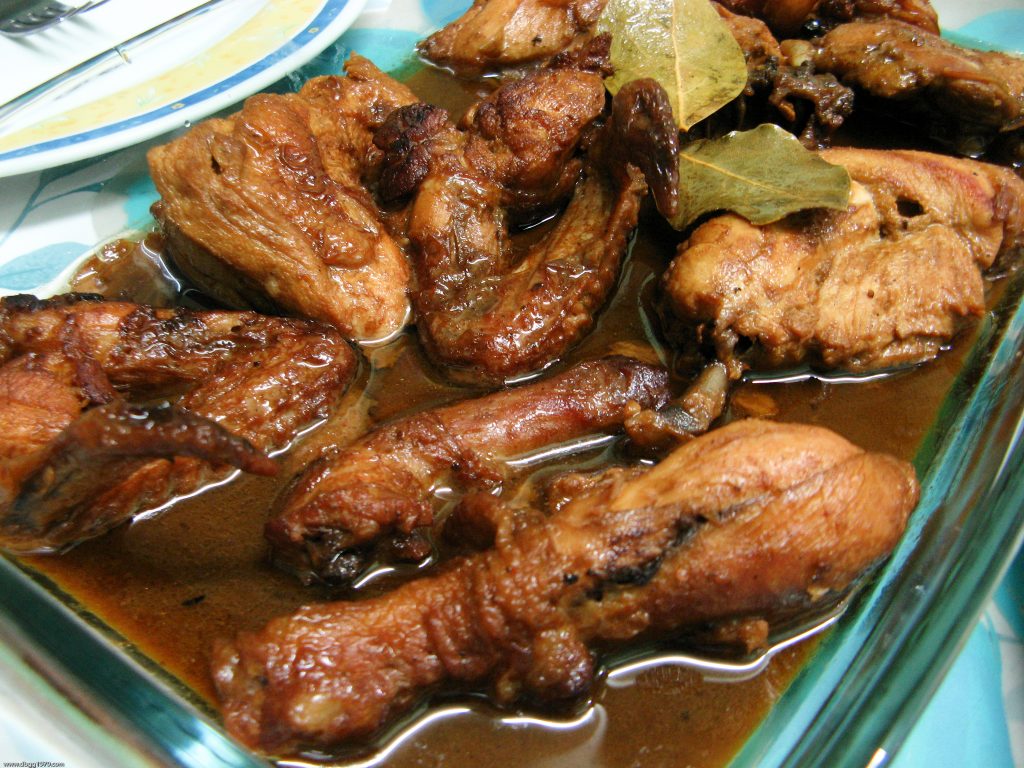
Chicken Adobo, Filipino comfort food at its finest. This is a dish where east really does meet west as it uses olive oil, garlic and other spices from the Spanish side, yet there is also the Chinese influence with the soy sauce.
On a more contemporary level, with America colonising the Philippines from 1898 to 1946, American influences have added another dynamic to the Filipino food culture – speed and convenience. Within a matter of a couple of decades, not only did Filipinos learn to speak English, they also became consumers of American food products – namely fast foods that include pre-packaged and canned goods. So from all this, you can see what a diverse cuisine Filipino food is. It is a complete mix of east and west and has something for everyone.
Then, of course, today, particularly in Manila, there are a number of international restaurants. This includes Italian, Chinese, Japanese, Mexican, Mediterranean, Indian etc. There are also a number of contemporary and fine dining restaurants too. So there is plenty of different restaurants and cuisines to suit all people and palates.
Another thing to take note of is that a lot of Pinoy chefs have gone and worked overseas to hone their skills and share Pinoy dishes overseas. Many of these chefs have worked at international hotels, on cruise ships and various cafes and restaurants all over the world. Upon returning, they introduce the ideas they have learned abroad and fuse this together with Pinoy style food. Therefore, there is a lot of Pinoy/western fusion dishes developing with new restaurants popping up everywhere.
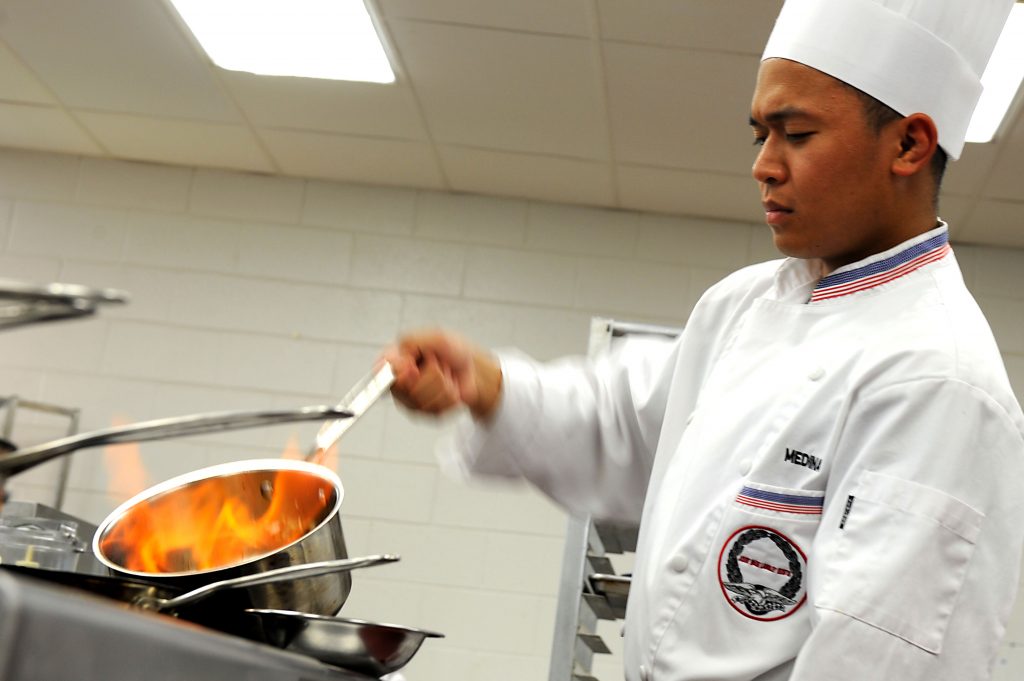
Filipino chefs gain their experience working abroad and then bring that knowledge back to the Philippines. These influences lead to a lot of fusion recipes and meals that are rapidly growing in popularity.
Anthony Bourdain Endorses Filipino Cuisine
Another very popular Filipino dish is pork sisig. Anthony Bourdain claims pork sisig will be the next big food trend in America. Pork sisig is served on a sizzling plate with delicious crispy bits of pork that give it extra texture. Sisig is usually also served with a raw egg on top. You then mix the egg through the pork to cook it with the heat rising from the sizzling plate. This is one of my personal favourites and is also the perfect snack to have when you’re drinking a few beers.
While on the topic of pork, before I continue on, it would be remiss for me to not talk about the Philippines most popular dish – lechon. Anthony Bourdain himself, along with his love of pork sisig, claimed Cebu lechon in particular as “the best pig ever”. Lechon comes from a Spanish term which means “roasted suckling pig”. So basically, lechon is a whole pig that has been skewered and is spit roasted over a charcoal pit. Lechon is always present at just about any celebration in the Philippines, no matter how big or small. You simply need to try lechon if you are in the Philippines.
Filipino Sashimi
Probably my favourite Filipino dish is Kinilaw. This dish is native to the Philippines and I often refer to it as the Filipino version of Japanese sashimi. This is of course when it is prepared using fish (you can also use chicken, goat, beef or pork). However, when prepared with fresh yellowfin tuna, there is simply no better dish on the planet. Other fish that can be used include tanigue, marlin, swordfish and mackerel.
The dish is prepared by cutting the raw meat into small cubes and mixing it vinegar. The vinegar is used as a denaturing agent which essentially “cooks” the meat. Calamansi (which is a fruit that is somewhere in between a lime and lemon) is also used as a souring agent. This is then flavoured with fresh ginger, garlic, salt, pepper and fresh chilis. In some parts of the Philippines, they also add coconut milk which I personally love. This is also added to try and reduce the sourness. Onion, cucumber and radish are usually also used to then round out the dish. If you love sashimi, you are sure to enjoy fish kinilaw.
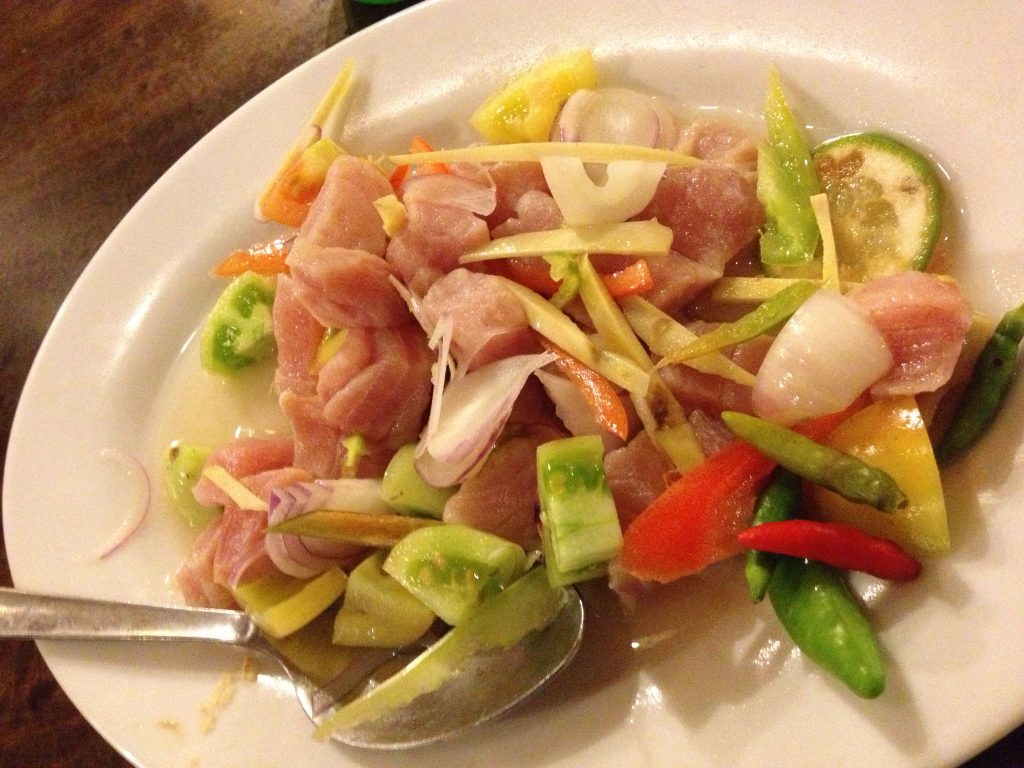
My favourite Filipino dish is kinilaw prepared with yellowfin tuna. This is great served as finger food when your having a few relaxing drinks and is usually shared.
Filipino Street Food
Pinoy street food is very different from the rest of Asia, particularly the hawker stalls of Malaysia. Therefore, don’t expect it to be the same. As an example, if you are out and about, you will see food carts on the street selling what look like chicken or pork skewers. These are normally synonymous with countries like Thailand or Malaysia, where you are able to buy sensational chicken satay skewers and the like. However, this isn’t so in the Philippines.
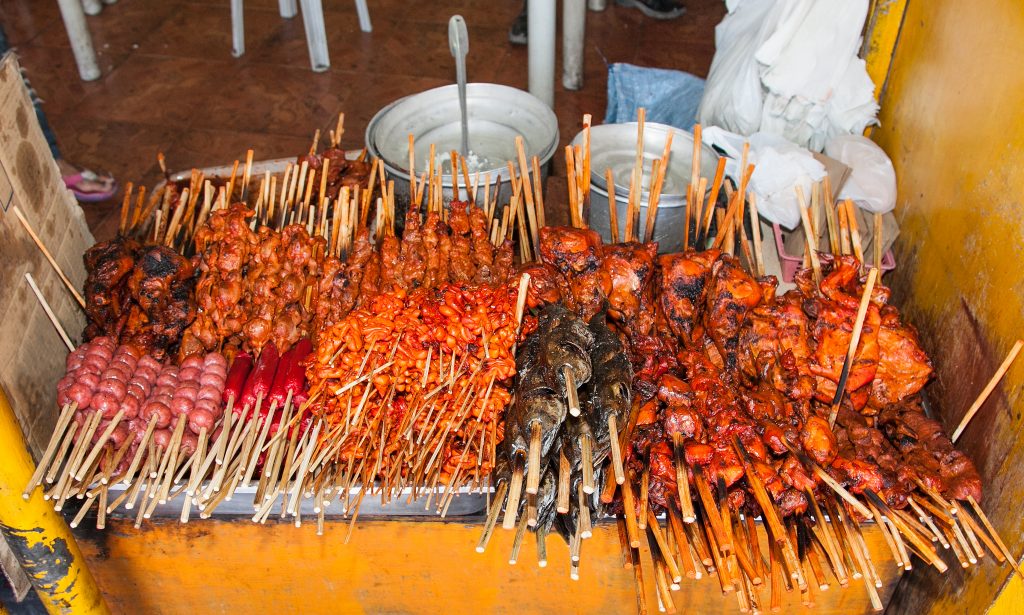
Everything here looks delicious, but can you pick the chicken intestines (isaw)? If you are a fan of eating the innards of animals, then it probably doesn’t matter. If you don’t like them, buyer beware!
Quite often, these skewers are chicken or pork intestines known as isaw. If you’re into that sort of thing, no worries, however, there are many who aren’t and it can be misleading. It pays to ask first exactly what it is before you buy it. You can get chicken meat skewers, but these are usually quarters of chicken, not strips. That is why isaw can be quite misleading. Pinoy style street food is relatively cheap and there is plenty of things to choose from. If you are backpacking on a budget, Filipino street food is good value.
Exotic Street Food
When talking about Filipino street food, I can’t go on without mentioning one of the local delicacies known as balut. I have seen balut described as “exotic” but for me, I can’t think of anything less exotic. Balut is basically a duck egg that has a semi-formed embryo inside it. The egg is boiled but in some cases, when consumed, the embryo is still moving. Uuuuugggh! I have been told that it’s meant to be an aphrodisiac. I couldn’t care less what it is but I can tell you one thing, I have never eaten one and I never will. If you were game enough to eat one, you would certainly become an exalted figure with the locals.
Some other exotic Filipino street foods include Camaro, which are field crickets cooked in soy sauce, vinegar, and sugar (which is basically cricket adobo) and Papaitan, which is a stew made with the innards of goat or cow, and flavoured with bile. Ummm, no thanks!
Psychoactive Fruit
Another one of the more “exotic” delicacies in the Philippines is moma. Although this isn’t actually a food per-se, I thought I would include it here out of interest. Moma is the local name for the areca nut, which is more commonly known as betel nut (although it is actually a berry and not a nut). My first encounter with this was in Banaue in northern Luzon. There were a number of random locals wandering around whose teeth and lips were bright red. It looked like they had been punched in the mouth. At first, I didn’t know what it was. However, after speaking to a few locals we worked out that it was moma.
Apparently one of the sensations or side effects from chewing moma is that it is meant to increase body temperature. With Banaue being at high altitude and getting quite cool at certain times of the year, this made some sense to me. However, I also found out that it can behave similarly to a psychoactive drug. So basically, everybody that was chewing this berry was walking around off their face and tripping out, while keeping warm in the process. They even have designated areas in which to spit the leftover remanence of the berry. This was really quite bizarre but I guess it keeps the waste under control.

I still find it bewildering that they actually have a “moma spitting area”. It is obviously a major issue in this part of the Philippines!
Food Hygiene
Just a word of warning. You need to exercise some caution when eating in provincial areas, particularly street food or food that is purchased outside of established restaurants. Sanitary conditions and food hygiene are not quite up to the standard of the more established eateries. Oftentimes, some of the carinderias (canteens), don’t have adequate refrigeration or food storage which also compounds the problem. So one needs to take this into consideration in selecting what to eat and where. If possible, it’s best to eat at food courts in shopping malls.
Halo-Halo – The Philippines Most Famous Dessert
Halo-Halo is a very popular dessert in the Philippines. It is made up of evaporated milk, coconut, boiled sweet beans, sago, tubers, fruit, gulaman (agar jelly) and yam ice cream mixed together with shaved or crushed ice. The word halo-halo itself means “mixed together”. Just like lechon, you will find this dessert at just about any Filipino celebration, big or small.
Jollibee – The Philippines Version Of McDonald’s
With the American influence in the Philippines, it is inevitable you will find hamburgers here. This starts with Jollibee. Jollibee is a fast food outlet that was started in the Philippines back in 1975. The menu is almost identical to that of McDonald’s with hamburgers, fried chicken and french fries being the main offerings. However, the main difference is that Jollibee is loaded with sugar, which is something that Filipinos love. If you wanted to have an authentic Filipino experience, then I guess there is nothing wrong with trying Jollibee. I usually don’t even eat McDonald’s but I think I have had Jollibee once or twice over the journey. And I can’t say that I’m not any worse off because of it!

Jollibee is the cornerstone of Philippines fast food and a major rival of McDonald’s. It is easily the Philippines biggest fast-food chain.
Filipinos And Food
Before we move onto beverages, there is one last thing we need to discuss on the topic of food. I wasn’t sure whether or not to put this under Survival Tip #3 on culture or here, under food. So here it is.
When it comes to food and eating, nothing makes Filipinos happier than eating. At just about 12 noon every single day, the country comes to a complete standstill while Filipinos take their lunch. It has often fascinated me as to why they are so fanatical about eating at exactly 12 pm. A Filipino friend of mine described it best – “Filipinos don’t eat when they’re hungry, they eat when it’s time”. And boy, do they eat! Just about every meal is almost like a celebration. This is even the same in the lunchroom at work! If you walk into a restaurant, there is so much talking and laughter you can barely hear yourself think. Not to mention the music usually compromises the meaning of the word “ambience”. Filipinos absolutely love to eat and love the social element of it just as much. It is always an exciting time.
Filipinos enjoy their food so much, they want to share that enjoyment with everyone. This means they will happily share their food, even with strangers. Filipinos are renowned for opening up their homes to strangers, particularly foreigners, in a gesture known as pakikisama (fellowship, camaraderie). This is a very admirable trait when one considers the poverty that most people have been exposed to. The importance of eating cannot be overstated in the Philippines. This is something that you need to get used to if you are planning to stay in the country.
Another thing that you need to get used to is eating with a fork and spoon. Filipinos do not use knives when eating. I don’t really know exactly why this is but I know from my experience, as their diet consists mostly of white meat (fish, chicken and pork), they don’t really need to use knives. These types of meat can be “cut up” with a spoon as the meat is fairly soft compared to say, beef or lamb. On top of that, much like the Chinese who eat with chopsticks, depending on the dish, the food is usually cut up prior to cooking it. This basically eliminates the need for a knife when eating.
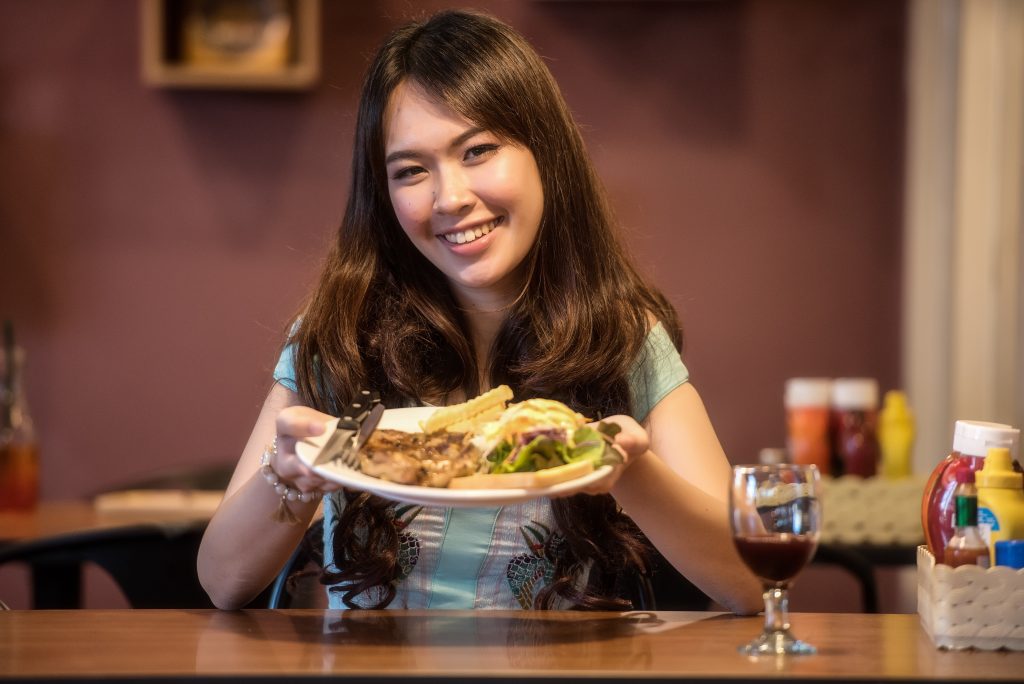
There is absolutely nothing on this earth that makes a Filipino happier than food. Just about every meal is a celebration. What’s more, it is part of their culture to share their food also.
Beverages
The Philippines is no different to any other country when it comes to beverages. You will find the usual selection of soft drinks, or soda as they call it here, and other types of beverages including energy drinks and so forth. When it comes to recycling bottles Filipinos are actually pretty good. So much so that if you purchase soda from a street vendor, or in most provincial areas, they will pour the soda into a small clear plastic bag, give you a straw, and keep the bottle. Usually, if you do take the bottles with you will be charged a small deposit fee per bottle (which most of the time is just built into the price).
One of my favorite local drinks is buko juice. This is basically the juice from a young coconut and is delicious. It is also high in natural electrolytes so is very good if you have a hangover or you’re feeling dehydrated after playing sport.
Beer, Wine and Spirits
Everyone has probably heard of San Miguel, the largest brewer in the Philippines. Up until a few years ago, it was just about the only beer that you could buy in this country. San Miguel Pale Pilsen, San Miguel Light, San Miguel Super Dry and then, of course, the extra strong hangover-inducing beer called Red Horse. Needless to say, San Miguel dominate the market here. However, there are a number of microbreweries and gastro pubs starting to appear which is good for variety. There are also several imported beers breaking into the market, mostly under the Asian Breweries license (Heineken and Tiger).
Another thing that is unusual compared to western countries is the availability of alcohol, beer in particular. Beer is readily available along with some of the local favourite spirits. You can easily find alcohol at 7-Elevens and other convenience stores and what’s more, you can even buy beer in the pharmacy. Talk about self-medication!
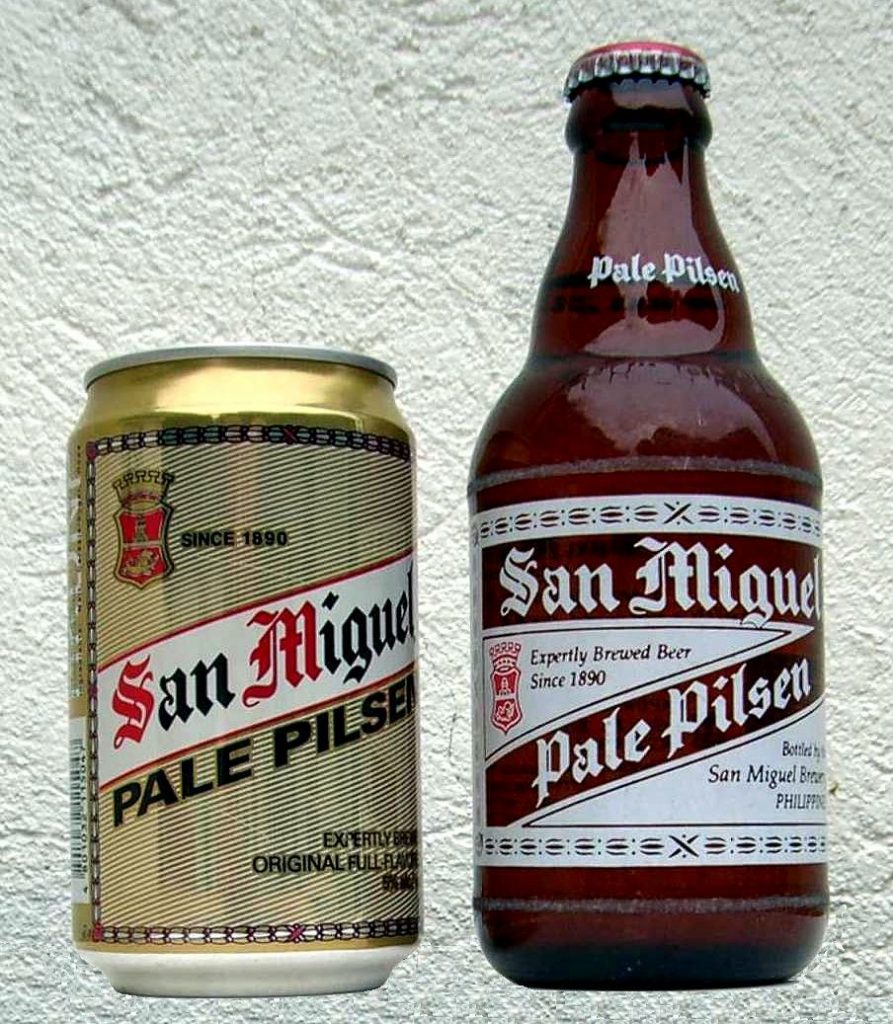
San Miguel absolutely dominates the beer market in the Philippines. Up until a few years ago, you almost had no choice but to drink it. Luckily now, there are more imported beers to choose from and there are also a number of microbreweries starting to pop up.
One word of warning if you’re drinking on the go – just about all bottles here, alcohol and soda, don’t have screw tops. So make sure that you have a bottle opener on your key ring or learn how to open bottles with other foreign objects.
Red and white wines are also becoming increasingly popular. There are a number of distributors and retail outlets now selling wine from pretty much all over the world and usually at very good prices. For example, it’s cheaper to by an Aussie wine here that it is to buy it in Australia! The selection of imported wines now is very good compared to years gone by.
If you like drinking rum, then the Philippines is almost like being in heaven. The local rum here, Tanduay, dominates the market. It is so cheap, it actually costs more to buy the coke you mix it with! Other local spirits consist of Ginebra, which is a local gin which is usually mixed with Lemonade (which also costs more than the liquor itself) and Brandy, which is usually drunk on the rocks.
Drinking Ice
When it comes to ice in your drinks, generally around Manila it’s fairly safe. However, when you get out to the provincial areas, it’s best to check the source of the ice or avoid it if you aren’t certain. Being a tropical country, the manufacture and distribution of ice have become a big industry here. As a result, the quality of ice and water filtration is improving. In the whole time I have been here, I haven’t known any of my friends to get sick specifically from drinking water or ice. However, it’s best to just double check if you aren’t sure.
One final word – it’s best not to drink tap water. Most hotels will have complimentary bottles of water when you arrive. Most notable restaurants will also offer filtered ‘service’ drinking water. When brushing your teeth, it might be best to use bottled water just as a precaution.
So there you have it, some survival tips on the bare necessities we need as humans – food and drink! For the next survival tip on Transport and Infrastructure, please click Survival Tip #9 to read more. If you missed the previous survival tip on Philippines Visa Options, click Survival Tip #7 to read more. Please feel free to leave comments below if you have a favourite Filipino dish that you have experienced or if you have any other comments about Filipino food or even its history. I would love to hear from you.
Philippines Fun Fact:
The Filipino national dish may very well be the adobo, which is a dark stew of chicken and/or pork cooked in soy sauce, vinegar, crushed garlic, bay leaf, and black peppercorns. In Spanish, adobo originally meant “sauce” or “seasoning.” The Filipino version is actually indigenous to the islands, dating back to a dish cooked up long before Magellan’s arrival (courtesy of https://www.factretriever.com/philippines-facts).


